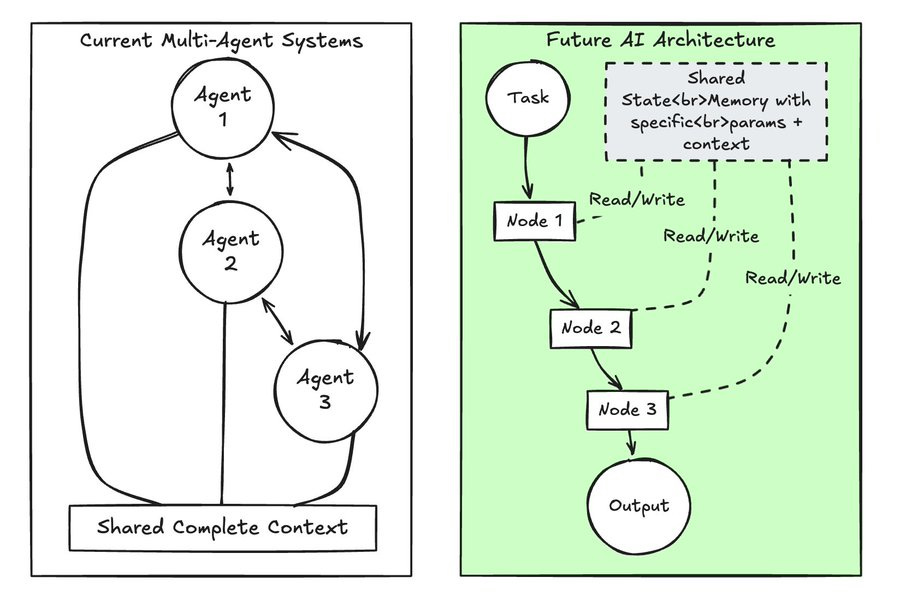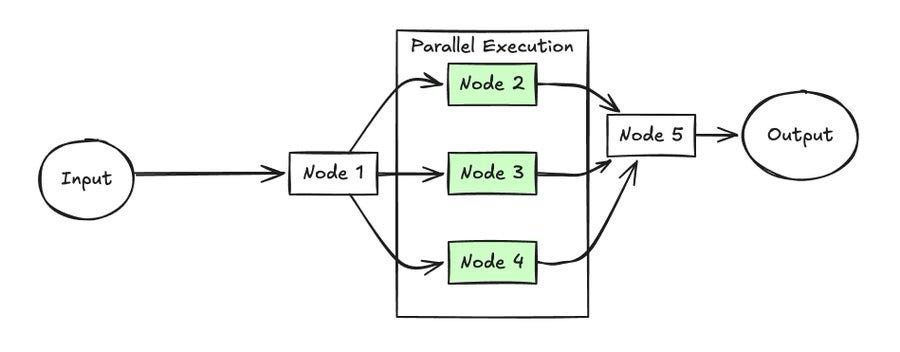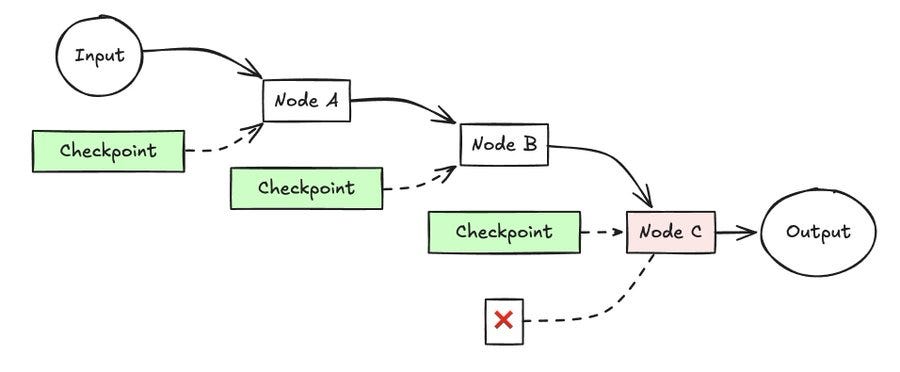Graph/Chain Execution: The Future of AI Workflows
The diagram represents a paradigm shift in how we structure AI agent workflows. While today's multi-agent systems often operate in shared contexts where every agent sees every message, the Graph/Chain Execution Flow Pattern introduces a more sophisticated approach that will define the future of AI architecture.
Why This Represents the Future
1. Context Isolation as a First Principle Current systems operate as group chats where every participant sees everything. This creates context pollution and inefficiency. The future belongs to systems that respect independence between processing units. Each node in our diagram operates with clean context boundaries, receiving only what it needs and producing only what others need from it.
2. Composability and Reusability The single input/output constraint creates standardized interfaces between nodes. This "LEGO brick" approach will enable developers to build complex systems from simpler, reusable components. In the future, we'll have libraries of specialized nodes that can be assembled into sophisticated processing pipelines without reinventing the wheel.
3. Predictability and Reliability The DAG (Directed Acyclic Graph) structure enforces a disciplined flow of information. This creates predictable execution paths that can be validated before runtime, significantly reducing the "black box" nature of current AI systems. As AI becomes more integrated into critical infrastructure, this predictability will become essential.
4. Scalability Through Parallelization Future AI systems will need to scale efficiently. The graph structure naturally identifies which nodes can operate in parallel, allowing for more efficient resource utilization. As AI models and tasks grow more complex, this parallelization will become increasingly valuable.
5. Enhanced Debugging and Observability When something goes wrong in current systems, pinpointing the issue can be challenging. The independence principle creates natural checkpoints between stages, making it much easier to trace where problems occurred. This observability will be critical as AI systems grow more complex.
6. Dynamic Internal Behavior with Controlled Boundaries While each node maintains strict input/output contracts, it can contain sophisticated internal logic - including its own multi-agent interactions. This creates a hierarchical architecture that balances flexibility with control, pointing toward a future where AI systems can be both autonomous and manageable.
Here’s to a future of structured, reliable, and scalable workflows.
Also note to developers! Check out our opensource framework!












